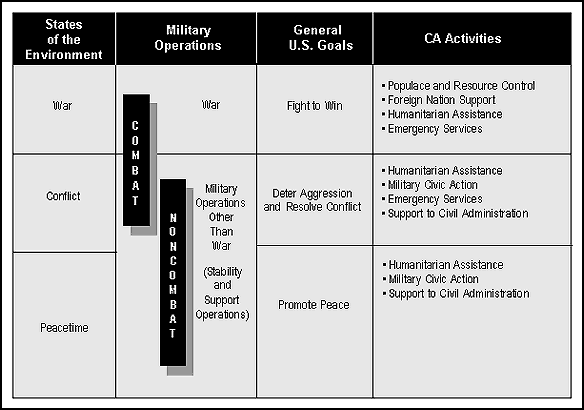This is, IMO, woeful. It is not a spectrum of conflict. It is also inaccurate. I think the old Three Block War is simplistic, but it's more useful than this. This actually implies that there are discreet areas of operation that are distinct and clearly identifiable. However, we know this not to be true, and thus it is misleading.
..and, how does it help to think like this? What use is this type of graphic?












Bookmarks